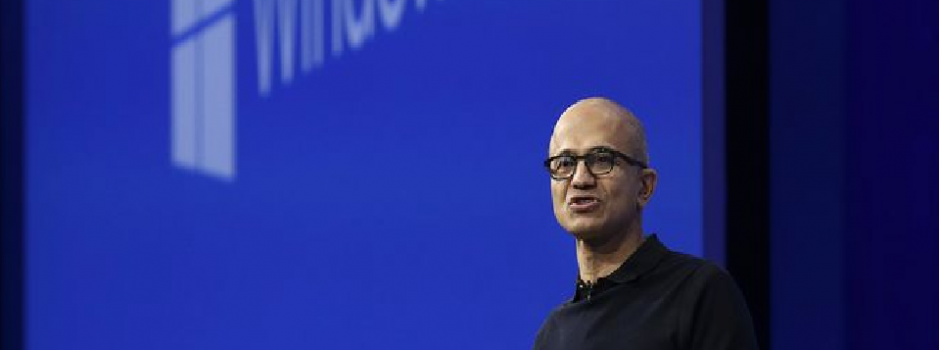Microsoft builds on vision for Windows 10, holograms

This will not be just another release of the company’s venerable operating system, the Microsoft CEO maintains. Windows 10 represents “a new generation of Windows … built for this era of more personal computing.”
That’s the unmistakable message that came through loud and clear in a nearly three hour keynote event at the Microsoft Build conference in San Francisco that also hit on the company’s ambitions for cloud computing and its major push to turn Office into a platform with partners ranging from Uber to LinkedIn.
As a conference targeted to developers, Nadella and his minions pushed hard on the notion of “universal” Windows 10 apps that work across a whole slew of devices and things: phones, tablets, Internet of Things appliances, holographic experiences that materialize out of thin air — and yes, of course, traditional PCs, too.
Windows is “built where mobility of the experience across devices is what is paramount,” not just the mobility of the device,” Nadella says. “It’s built such that users can interact with the variety of devices powered by Windows in the most natural of ways: it could be touch, it could be ink, speech, mouse and keyboard or even holograms.”
The goal is to have Windows 10 working on no fewer than 1 billion devices in two to three years, more than any rival operating system. Amid the seismic changes in personal computing the last several years, Windows is still used by 1.5 billion people.
Microsoft’s pitch to the audience is that Apple developers have to choose among Mac OS X and iOS; Google developers among Chrome and Android. But Windows developers can develop for just Windows.
Microsoft also tried to appeal to the crowd by letting them reuse existing Web tools, as well as the code they use to develop for — drumroll, please — Android and iOS.
The company went further in showing the deeper integration of the Cortana personal assistant across all Windows 10 devices, not just phones where Cortana got its start. They showed how universal apps can adapt to the different devices and screen sizes they are on. Microsoft used USA TODAY’s own Windows 10 app to hammer home that point.
Microsoft also gave a new name, Microsoft Edge, to the successor to its soon-to-be-retired Internet Explorer browser. This latest browser had been going by the code-name Project Spartan.
Without a doubt, the coolest stuff shown on stage involved HoloLens, Microsoft’s bold foray into holographic computing (or more accurately augmented reality). I was wowed by HoloLens when I saw early demonstrations in January. It appears that Microsoft has made steady progress.
Microsoft has been teaming up with Case Western Reserve and the Cleveland Clinic in showing how holograms could be used to help educate medical students.
In one really impressive demo during the Build keynote, a virtual video screen “followed” a Microsoft employee as he moved across the stage.
Microsoft is working with such partners as Disney, NASA and Autodesk on HoloLens.
The company is also providing “hundreds” of HoloLens headwear that developers can try during the conference. I for one am eager to see what they come up with.
While Windows 10 garnered most of the attention, the move to open up the Office platform also has broad ramifications. After all, Office is used today by 1 billion people or so.
For example, with Uber built into Outlook, you might be able to arrange a ride directly from your calendar.
Source: USA Today
